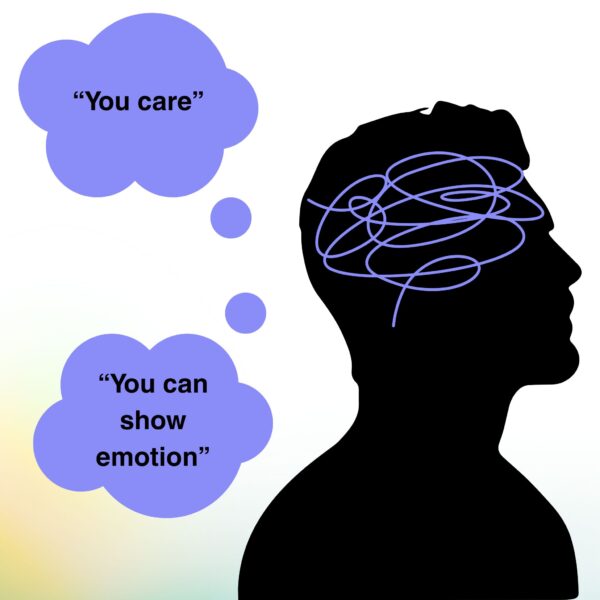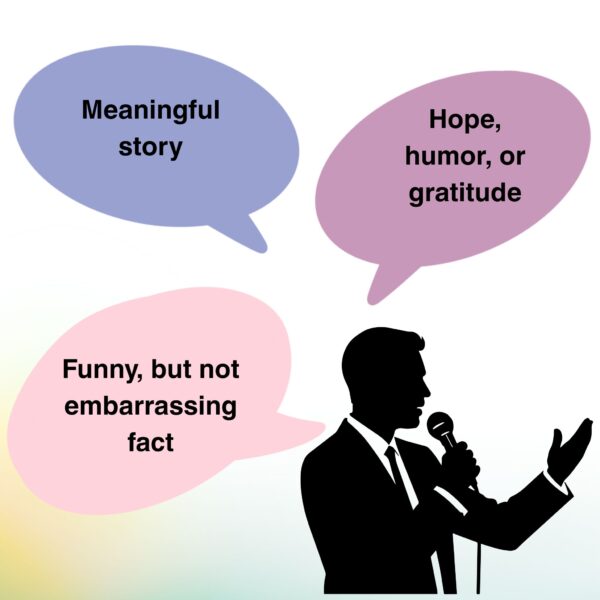Public presentation tips are not just for people who “lack confidence”. If we are being honest, most of us feel a jolt of nerves—or even dread—when we’re asked to speak in public. Your heart races, palms sweat, and your mind races with “what if I mess up?” But here’s the twist: becoming a great speaker isn’t magic, and it’s definitely not just for “naturals.” It’s a skill anyone can learn, one step (and one deep breath) at a time. Whether you’re pitching an idea, teaching a class, or raising a toast at your best friend’s wedding, these are the real secrets to transforming stage fright into genuine, magnetic presence.
And speaking of magic, since most people are not natural at crafting stories or deck writing; here’s where AI joins as a wizard for storytelling, which is imperative in this matter. If you’d like more resources and guides on how to use AI for business and AI for presentations, make sure to go through our Learning Vault.
Understanding Audience & Purpose
Ever sat through a talk and wondered, “Who is this for?” The best speakers never leave their audience guessing. Before you type a single bullet point, ask yourself: Who’s in the room—and what do they care about? Are they busy execs who want you to “get to the point”, or students hoping for a little inspiration (and maybe a story or two)? When you craft your message for real people, not just a generic “audience,” you’re already halfway to winning them over.
Think of your audience as your compass: every decision—from your opening line to your visuals—should be guided by what they need, expect, and value. Are they seeking practical tips, motivation, or a sense of connection? Sometimes, you’ll be facing a diverse group with mixed backgrounds, interests, and levels of expertise. In that case, use relatable examples, ask questions, or even acknowledge the diversity in the room to build common ground.

Quick public presentation tips for connecting with any audience:
- Do a little research before you speak—what’s their background, pain points, and expectations?
- Open with something that resonates: a question, a story, or a shared experience.
- Adjust your language and energy to match the room—formal for professionals, conversational for creative groups, energetic for younger crowds.
- Take into account their level of understanding. When it comes to vocabulary or complex ideas.
Ultimately, the secret to influence isn’t about “broadcasting”—it’s about making each person in the room feel like they are in the right room listening to the right person. That’s where real impact begins.
Structuring Your Message for Maximum Impact
Here’s a little secret: the simplest speeches are usually the stickiest. People remember stories, not data dumps. Every effective presentation—TED Talk or team update—has a backbone:
- An opening that grabs attention (a surprising fact, a personal story, a bold question)
- A body that unpacks your main points (with examples and a clear path from start to finish)
- A truthful “experience” or “memory” (emotional truths and intellectual truths are just as important) Your audience will engage at a subconscious level through the “truths” you share and whether or not they believe you.
- A closing that ties everything together but you have to make sure you don’t bring up any new information in your conclusion.
Go through our Mastering the Individual Oral Presentation Guide for a more in depth breakdown of how you should craft your structure.
Think of your presentation like doing a load of laundry. The introduction is those first essential chemicals and soaps you toss in—the ideas and context that get everything ready and start to loosen up the dirt. The body of your talk is the wash cycle itself: all the churning, drumming, and action that really gets things clean—this is where your substance and arguments do their work. The conclusion is your softener, leaving a scent or feeling the audience won’t forget. And finally, as you dry your clothes, you’re making sure those ideas don’t just sit in the machine—they actually “land” in real life, warm and ready to use, connected to your audience’s world.

If you skip a step, or rush the process, you’ll end up with something that doesn’t quite stick, or worse, leaves things a mess.
Forget jargon. Just talk like you would to a smart friend. Use “signposts” (“Here’s the first thing you need to know…”) to keep everyone on track. It’s about being clear, not fancy.
Voice, Presence, and Non-Verbal Communication
You might have the greatest script in the world, but delivery is where the magic happens—or fizzles. Here’s what most people get wrong (and how to fix it):
- Talk slower than you think you should. When the nerves hit, we speed up. Deliberately slow down.
- Project slowly. Speak up. Even if it feels loud, it rarely is if you over-articulate to keep a good pace.
- Use pauses. Silence grabs attention. It makes your words land, and gives you a breather.
- Practice as much as you can. For example this leader posted the following Reddit question:
Any suggestions on how to become better at public speaking?
byu/Sunnydaysomeday inLeadership
And as cliché as it may sound, the most up-voted answer was:
Comment
byu/Sunnydaysomeday from discussion
inLeadership
- Make eye contact—not just with the back wall, but with real people. Nod, smile, let yourself be seen.
- Watch your hands and feet. Nervous swaying or fidgeting is normal, but if you’re aware of it, you can trade it for open gestures and purposeful movement. And try to avoid coming off as rude, instead try to come off as emotionally grounded. Janine Burke, public speaking coach at The University of California, recommends two very important points:
“Pointing is considered VERY RUDE in many cultures. Considering most of our audiences are multi – cultural we want to keep them all happy. Instead of pointing, use a sweeping gesture, like you see them do on airlines when the staff are directing you toward the exits or overheads. Or think Vanana White on “The Price is Right.””
And when it comes to showing emotionality, here’s an easy one:
“Hand to heart – this is a good one, when telling of something that touched your heart OR to convey deep emotion – gently touch your hand to your heart”
In short, nobody expects you to be perfect. They want you to be real and respectful.
Real-World Anxiety-Busting Techniques
If you think the butterflies will go away someday, let me save you some suspense: they won’t. But you can ride the wave—and even use it.
-
- Preparation is your best friend. If you know what you want to say, you can focus on how you say it. This other Reddit user couldn’t have said it better:
Comment
byu/Sunnydaysomeday from discussion
inLeadership
- Reframe nerves as excitement. Your body isn’t betraying you—it’s getting you ready for action. A really good quote from the article Turn Social Anxiety into Excitement With This 5-Step Public Speaking Trick Written by
“Remember, you’re anxious because you care.”
- Admit your nerves. Say, “I’m a little nervous today!” People will root for you.
- Mingle before you speak. It turns “a crowd” into “people you’ve met.”
- Have a ritual. Some folks bounce on their toes, others doodle, some do box breathing, and others visualization. Find your thing that gets you in the zone!

Anxiety Mitigation Techniques
Even the most seasoned speakers feel a flutter of nerves before stepping onstage. The good news? There’s a whole toolkit of practical techniques—backed by both tradition and real-life experience—that can help you keep anxiety in check and bring out your best self. Here’s a quick breakdown of the most effective strategies, from classic breathing exercises to community-driven hacks, so you can find what works for you:
| Strategy Type | Technique | Description |
|---|---|---|
| Traditional & Formal | Deep Breathing | Take slow, deep breaths to calm the nervous system before and during the speech. |
| Over-preparation | Know your topic inside-out and practice until the message is natural. | |
| Reframing | Reframe nervousness as excitement or anticipation to create a more positive mindset. | |
| Reddit & Community-based | Admitting Nervousness | Openly acknowledge your anxiety to the audience to create a relatable and human connection. |
| Mingle Beforehand | Interact with the audience before the presentation to turn “strangers” into “friends.” | |
| Beta-Blockers (e.g., Propranolol) | Use as a short-term, medically-supervised tool to manage physical symptoms of anxiety. | |
| “Tell on Yourself” | When symptoms arise, verbalize your feelings of nervousness with a smile to disarm both yourself and the audience. |
Scenario Playbook
There’s no single “right way” to present. What works in a boardroom might flop at a wedding, and vice versa. The key to a memorable, effective talk isn’t just what you say—it’s how well your approach fits the moment and the audience. Here’s how to tailor your style for three of the most common settings:
Business:
In professional settings, time is tight and expectations are high. You’re there to drive clarity, inspire action, or win buy-in. The best business presentations stick to a clear framework: Problem/Solution/Benefit or OBN (Opportunity/Benefits/Numbers). Start with a punchy opening that quickly highlights the problem or opportunity. Explain your “why”, then walk through your solution, using data, stories, or visuals to support your case. End with a strong, confident call to action.
Example: Pitching a new product to execs? Open with a customer pain point, explain how your solution fixes it, then spell out the financial upside.
Pro Tip: Don’t let slides be a crutch. Build your narrative first—then use visuals to reinforce your strongest points, not to overwhelm. Keep in mind the context of the meeting when coming up with your presentation for example; pitch deck vs executive summary.
Academia:
Academic talks and lectures are all about sharing knowledge—but dumping too much data at once can make eyes glaze over. Start by defining any jargon or key terms and clearly outlining the purpose and flow of your talk. Use “signposts” to help your audience track where you’re going, and weave in relatable stories or real-world applications to bring abstract ideas to life. When you show slides, reveal visual information gradually rather than all at once—this keeps attention focused and helps students follow your logic step by step.
Example: Teaching a statistics concept? Start with a story about how data affects daily decisions, walk through your method with a simple example, then wrap up with a real-world application.
Pro Tip: Be expressive and invite interaction—ask questions, encourage discussion, and check for understanding along the way.
Special Events:
When you’re speaking at a wedding, retirement party, or graduation, it’s all about connection and emotion—not just reciting facts. Keep it brief, personal, and heartfelt. Tell a meaningful story, make the audience feel something, and wrap up with a message of hope, humor, or gratitude. Special events are a great time to mention a funny, but not embarrassing fact, or a touching memory that others can relate to.
Example: Toasting at a wedding? Share a quick, light-hearted story about the couple, then wish them well in your own words.
Pro Tip: Don’t read word-for-word—jot down a few anchor points on a card and speak from the heart. If you get emotional, let it show. Sincerity is always remembered.

Scenario-Specific Speech Structures
|
Scenario
|
Primary Purpose
|
Key Structural Frameworks
|
Key Elements
|
|---|---|---|---|
|
Business
|
Persuade, Inform, or Provoke Action
|
Problem/Solution/Benefit; Opportunity/Benefits/Numbers (OBN)
|
Concise Title, Credibility Introduction, Dedicated Q&A
|
|
Academic
|
Inform, Clarify, or Enlighten
|
Introduction (Purpose, Signposting), Body (Logical flow), Conclusion (Summary)
|
Define Terms, Avoid “Data Dump,” Use Examples and Analogies
|
|
Event
|
Evoke Emotion, Entertain, or Honor
|
Storytelling Arc (Introduction, Anecdote, Conclusion)
|
Personal Anecdotes, Relatability, Sincerity, Humor
|
No matter the occasion, adapting your approach makes your message more engaging and memorable. Know your audience, tailor your delivery, and you’ll always land in the right place.
Insights from the TEDxNelson Talk: “The Public Speaking Lesson You Never Had”
DK’s TEDxNelson talk is a breath of fresh air in a world of stiff, “always be confident” public speaking advice. His message? Don’t pretend you’re not nervous—own it. Real public speaking is about embracing your anxiety and using it to fuel your message. DK’s humor and honesty make you realize that being authentic is far more captivating than chasing perfection. He recommends practicing your storytelling in everyday moments, focusing on how you make people feel, not just on getting the words right. His approach is proof that you don’t have to be slick to be memorable—you just have to be real.
- Treat nerves as excitement: DK suggests reframing stage fright as energy you can use, not a weakness to hide. That shift in mindset can help you channel adrenaline into presence and connection, rather than panic.
- Grace, Credibility, Resonance: He breaks down great talks into three simple ingredients: how you physically present (grace), what you say (credibility), and how you leave your audience feeling (resonance). Focusing on these can turn any talk into a memorable experience.
- Practice vulnerability and self-awareness: DK shares how revealing your own quirks, mistakes, or even physical nervousness (like shaking hands) makes you more relatable and trustworthy—audiences connect with people, not perfection.
Tools for Effortless Presentations
If you’ve ever stayed up late tinkering with PowerPoint, you know the pain of turning an idea into slides that don’t look like everyone else’s. Aurora Slides changes the game. This AI-powered tool takes your notes, outlines, or even transcripts and turns them into slick, on-brand decks—no design chops required.
- Turn your raw ideas into polished slides instantly.
- World-class templates and layouts that make you look like a pro.
- AI-powered story mapping keeps your narrative logical and clear.
- Real-time collaboration and sharing—no more “Is this the right version?” headaches.
- Seamless export and “present” mode for stress-free delivery.
Focus on your story, not your formatting. Aurora Slides does the heavy lifting so you can shine where it counts.
Some other AI tools than can help you with your presentation:
Wisdom from Online Communities
Ask anyone who’s been there: the best tips often come from people who’ve bombed, learned, and gotten back up. Reddit and other forums are gold mines for this kind of lived wisdom.
-
- Vulnerability wins. If you mess up, laugh and keep going. You could also simply admit your nervousness and watch how tension leaves the room!
- If you already had an experience where you failed at your public speaking – do not overthink it. This is some great Reddit advice to an individual in his 30’s who surprisingly ran out of breath and couldn’t project his own voice:
Comment
byu/Wolfpack27292_ from discussion
inPublicSpeaking
-
- Reps matter. Tell stories to friends, speak up at meetings, record yourself—practice everywhere.
- Start by saying your speech out loud before you ever write it. Your words will be more natural. You could start by having a conversation with someone to hear yourself explain and structure your topic the best way possible…
Comment
byu/KingPartake from discussion
inPublicSpeaking
- Rituals aren’t silly—they’re survival skills. Whether it’s a certain playlist, a walk, or a lucky charm, do what helps you calm down.

What matters most isn’t a flawless delivery—it’s making your audience feel seen and heard.
Conclusion
You don’t need to be the next TED icon or the office comedian. You just need to show up, care about your message, and connect. The best speakers are made, not born. So start where you are, use what you have, and let your real voice—nerves and all—lead the way. With every talk, you’ll get better. And with every stumble, you’ll get braver. That’s what mastery really looks like.
Remember, public speaking is a journey, not a single performance. Each time you step up, you’re building new skills and discovering your unique style. Don’t shy away from nerves—they’re a sign that you care. Channel that energy, trust your preparation, and know that your story matters. The world doesn’t need perfect speakers. It needs real ones—like you.
Frequently Asked Questions (FAQs)
How do I handle unexpected questions during a presentation?
A: Pause. Smile. Say, “That’s a great question,” and answer honestly. If you don’t know, promise to follow up. People respect candor.
What are the best ways to practice for a big speech?
A: Say it out loud, record yourself, and get feedback from a friend or colleague. The mirror is your friend.
How do I make my slides more engaging?
A: By using an AI Deck Builder you like and trust. Less text, more visuals—let Aurora Slides do the heavy design work for you. Actually, you don’t even have to think about it.
Public presentation tips on what to do if I completely blank on stage?
A: 1) Breathe. Pause. Say, “Let me gather my thoughts.” The audience will wait; they want you to succeed. 2) Breathe. Pause. Say, “Let me gather my thoughts.” The audience will wait; they want you to succeed. 3) Make a light joke. Say, “I lost my place for a moment—thanks for your patience!” The audience will appreciate your honesty.
What makes Aurora Slides different from other presentation tools?
A: Aurora Slides combines world-class design templates with AI-powered story mapping, turning your raw ideas or notes into polished presentations instantly. Unlike traditional tools, it doesn’t just automate formatting—it helps you structure your story and visualize your key points, so your message lands with maximum impact. Learn more about AI and creativity when crafting presentations.
Can I collaborate with others in real-time using Aurora Slides?
A: Yes! Both Aurora and Aurora Slides are built for seamless collaboration. You can invite teammates to edit, comment, and build presentations together in real time, whether you’re in the same room or across the world. Plus, with conversational AI support, you can get smart suggestions as you work.
